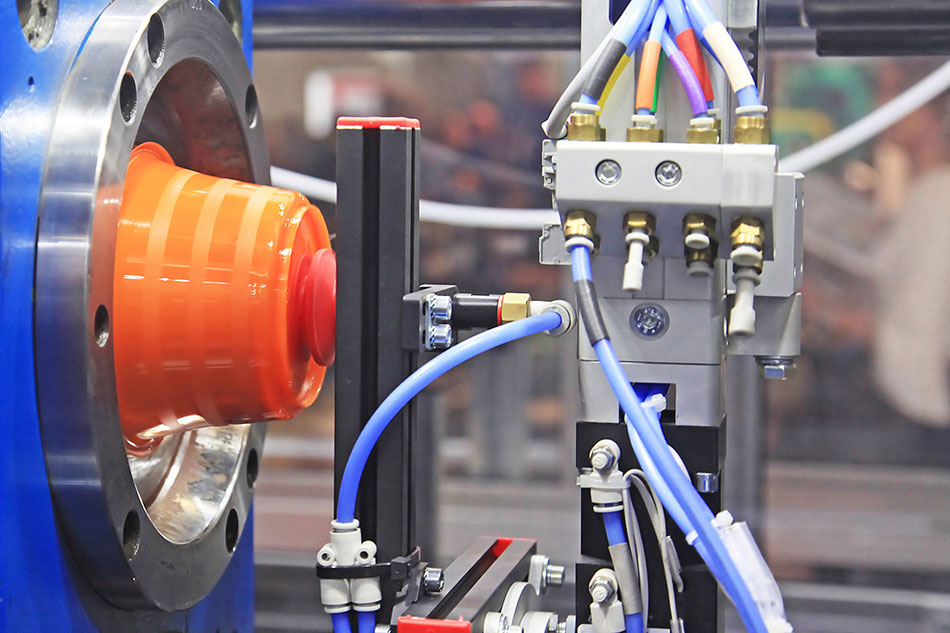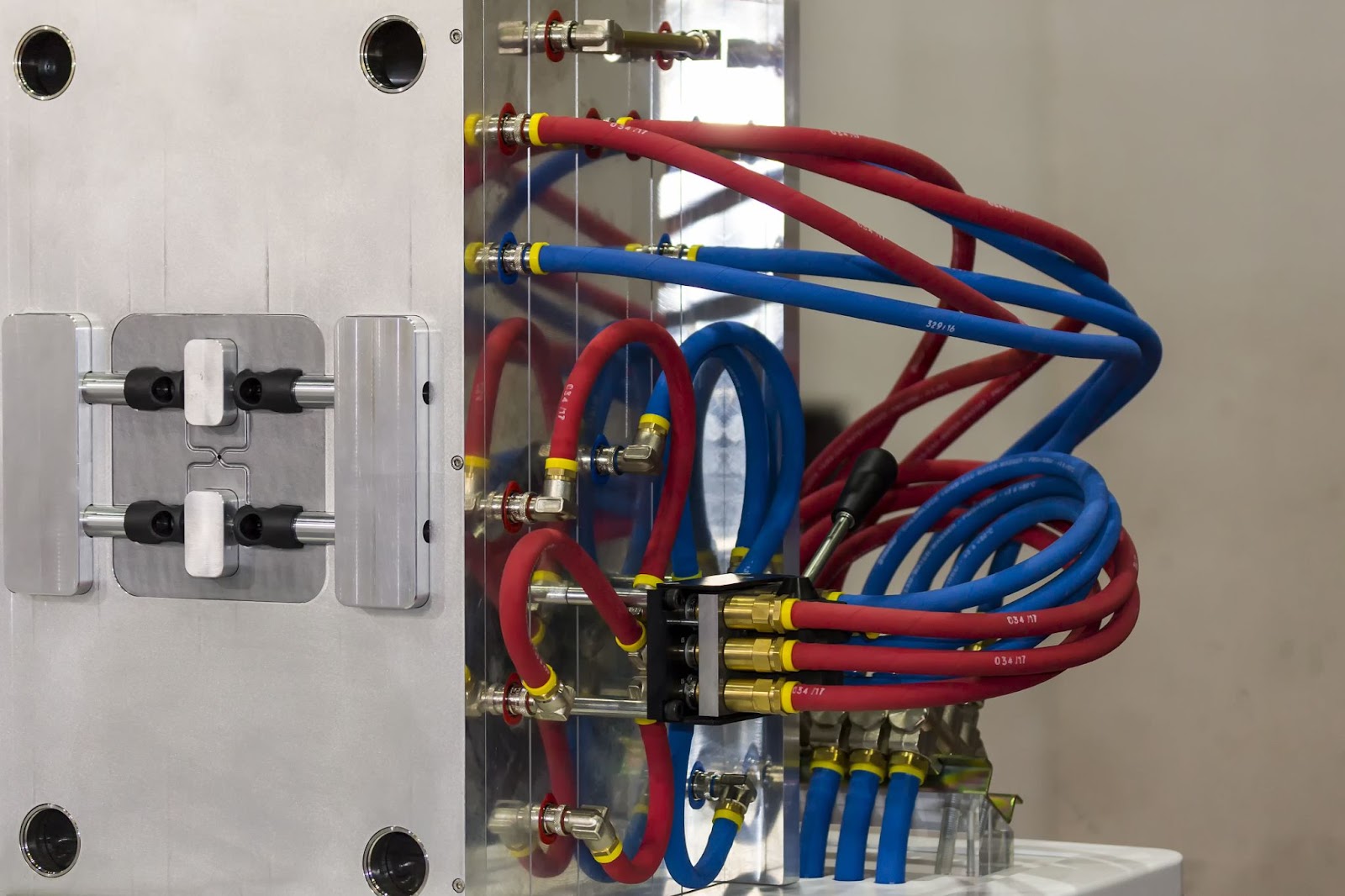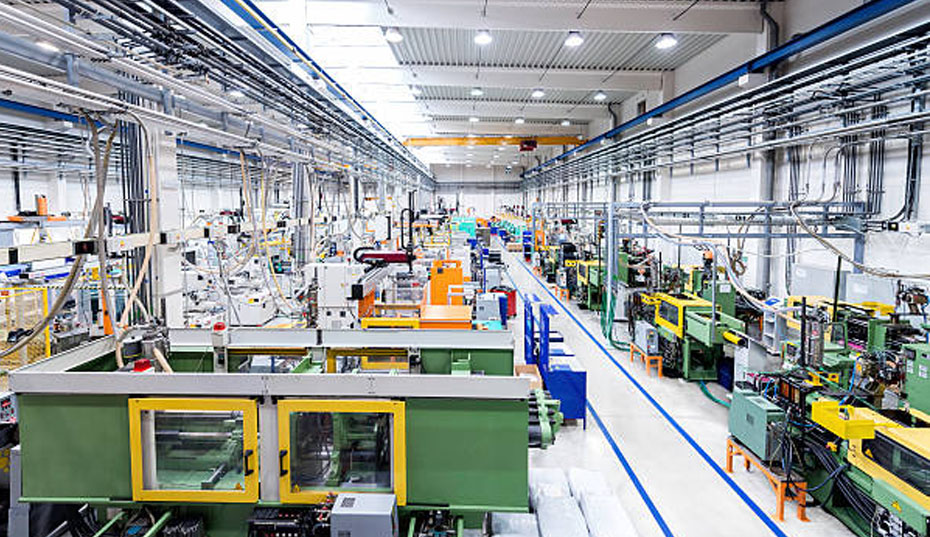To reduce cooling time in injection molding, optimize wall thickness, employ advanced cooling technologies, and use efficient coolants.

Factors Affecting Cooling Time
Understanding the factors that impact cooling time is essential in optimizing injection molding processes. Here are the primary factors affecting the cooling time:
Material Type and Properties
- Thermal Conductivity: Different materials have varied abilities to conduct heat. Materials with high thermal conductivity cool faster.
- Viscosity: Materials with high viscosity tend to retain heat longer, which can increase cooling time.
- Melting Temperature: Materials with a higher melting temperature might require longer cooling durations to solidify.
- Glass Transition Temperature: The temperature at which the material transitions from a hard, glassy state to a soft, rubbery state. Materials with a higher glass transition temperature can potentially require longer cooling times.
- Crystallinity: Some polymers are semi-crystalline, and the rate of crystallization can influence cooling time.
Mold Design
- Wall Thickness: Thinner sections of the mold cool faster than thicker ones. Uniform wall thickness can help ensure even cooling.
- Mold Material: Some mold materials have better thermal conductivity, aiding faster heat dissipation.
- Cooling Channels: The design, location, and size of cooling channels can significantly impact cooling efficiency. Properly placed conformal cooling channels can reduce cooling times.
- Mold Surface Finish: A polished surface can affect the rate of heat transfer between the molded part and the mold.
Injection Parameters
- Injection Speed: Faster injection speeds can sometimes generate more shear heat, potentially affecting cooling time.
- Mold Temperature: A pre-heated mold can reduce the temperature gradient, potentially speeding up the cooling process.
- Injection Pressure: Higher pressures can increase the density of the molded part, which might affect how fast the part cools.
- Cycle Time: The total time of one molding cycle, of which cooling is a significant part. Adjusting other parts of the cycle can sometimes indirectly impact cooling time.
Techniques to Reduce Cooling Time
To achieve efficient and cost-effective injection molding processes, reducing cooling time is crucial. Here are some of the proven techniques to optimize cooling time:
Optimizing Wall Thickness
- Uniformity: Ensuring consistent wall thickness helps in even cooling, reducing the risk of warping or sinking.
- Thin Walls: Where possible, designing parts with thinner walls can directly decrease cooling time.
- Rib Design: Using ribs can provide structural integrity to a part without increasing wall thickness, thereby aiding faster cooling. It’s essential to refer to design guidelines when determining rib dimensions to ensure optimal performance.
Using Superior Thermal Conductive Materials
- Metal Selection: Metals like aluminum or beryllium-copper have high thermal conductivity, making them excellent choices for faster cooling molds.
- Enhanced Polymers: Some polymer blends or fillers can enhance thermal conductivity, allowing the molded part to cool faster.
- Nano-fillers: Introducing nanoscale fillers can increase the thermal conductivity of polymer molds, promoting quicker cooling.
Improving Mold Temperature Control Systems
- Efficient Coolant Flow: Ensuring turbulent flow of the coolant can improve heat transfer efficiency.
- Temperature Regulation: Using advanced temperature control systems that can heat and cool molds rapidly. This is beneficial for processes like Rapid Temperature Cycling which require fast temperature changes.
- Placement of Cooling Lines: Strategic placement closer to the mold surface ensures efficient heat removal.

Role of Coolants
Coolants play a pivotal role in the injection molding process, ensuring that heat from the molten polymer is effectively dissipated, allowing the part to solidify correctly. The choice of coolant and its application can substantially influence the cooling time, part quality, and overall cycle time.
Types of Coolants
- Water: The most commonly used coolant due to its excellent heat transfer properties and cost-effectiveness. Deionized water is often preferred because it minimizes the risk of corrosion.
- Oil: Used in situations where higher mold temperatures are required, especially for certain thermoplastic materials.
- Air: In some cases, compressed air can be used as a coolant, especially for small components or when rapid cooling is needed.
- Specialty Fluids: There are proprietary fluids designed for specific applications, providing enhanced cooling capabilities or other desirable properties.
Best Practices in Coolant Selection and Usage
- Coolant Compatibility: It’s essential to ensure that the chosen coolant is compatible with both the mold material and the polymer being molded to avoid corrosion or degradation.
- Temperature Control: Maintaining the coolant at its optimal temperature can maximize its cooling efficiency.
- Flow Rate: Ensuring an optimal flow rate is crucial. A turbulent flow often provides better heat transfer than a laminar flow.
- Regular Maintenance: Coolants can accumulate contaminants over time. Regularly filtering and replacing the coolant can prevent issues related to contamination.
- Coolant Channels: Ensuring that the coolant channels in the mold are free from obstructions and are designed for optimal flow can significantly enhance cooling efficiency.
- Environmental Considerations: When selecting a coolant, considering its environmental impact, disposal methods, and recyclability can contribute to more sustainable manufacturing practices.

Advanced Cooling Technologies
In the realm of injection molding, leveraging advanced cooling technologies can significantly enhance the molding process, reduce cycle times, and improve part quality. Here’s a deep dive into some of the cutting-edge cooling methods being adopted by the industry:
Conformal Cooling
- Definition: Conformal cooling refers to the design and creation of cooling channels that follow the shape or contour of the molded part, ensuring uniform cooling.
- Manufacturing with Additive Manufacturing: Modern 3D printing techniques allow for the creation of intricate and efficient cooling channels, which were previously impossible with traditional methods.
- Benefits: By providing more uniform cooling, conformal cooling can reduce warping, shrinkage, and other defects. It also reduces cooling times, leading to faster cycle times.
- Applications: Conformal cooling is especially beneficial for complex geometries or parts with varied wall thicknesses.
Beryllium-Copper Inserts
- Material Properties: Beryllium-Copper is known for its high thermal conductivity and strength, making it an excellent choice for mold inserts.
- Insert Placement: These inserts are often placed in areas of the mold that require rapid heat dissipation, like thick sections or potential hot spots.
- Benefits: By using Beryllium-Copper inserts, one can achieve faster and more uniform cooling, reducing potential defects and improving part quality.
- Safety Considerations: Working with Beryllium requires safety precautions, as it can be hazardous when inhaled as a dust.
Rapid Temperature Cycling
- Principle: This technology involves rapidly heating the mold before plastic injection and then quickly cooling it to solidify the part.
- Heating Methods: Techniques like steam heating, infrared radiators, or electric heaters can be used to rapidly heat the mold.
- Benefits: Rapid temperature cycling can improve the surface quality of molded parts, reduce residual stresses, and can even lead to better replication of mold details.
- Applications: Particularly useful for achieving glossy finishes or for molding parts with intricate details.
Simulation and Modeling
In the context of injection molding, simulation and modeling play pivotal roles in ensuring process optimization and part quality. Leveraging computational techniques can significantly reduce trial-and-error, leading to reduced costs, shorter time-to-market, and superior product quality.
Importance of Predictive Modeling
- Cost Savings: By simulating the molding process, potential issues can be identified and corrected before actual production, reducing wastage and rework.
- Optimized Design: Predictive models can help designers refine part geometry, gate locations, and cooling channel design, ensuring optimal mold performance.
- Reduced Time-to-Market: With the aid of accurate simulations, the number of iterations required to achieve a satisfactory design can be reduced, speeding up the product development cycle.
- Quality Assurance: Through predictive modeling, potential defects like warping, sink marks, or air traps can be anticipated and mitigated.
- Educated Decisions: Armed with data from simulations, manufacturers can make informed choices regarding materials, molding parameters, and equipment selection.

Software Tools Available for Cooling Analysis
- Moldflow: A widely recognized software, Moldflow provides detailed insights into the entire molding process, including cooling analysis, allowing for efficient mold design and process optimization.
- SIGMASOFT: This software offers a 3D simulation of the injection molding process, taking into account the complete mold set and machine behavior.
- C-MOLD: A comprehensive tool that provides analysis on filling, packing, and cooling, helping mold makers design and optimize their processes.
- PolySIM: Catering specifically to the analysis of thermoplastic materials, this tool offers detailed insights into how different polymers will behave during the molding process.
- T-SIM: Focused on the compression molding of thermoset materials, it provides simulation capabilities to anticipate potential issues and optimize process parameters.
Quality Implications of Reduced Cooling Time
Reducing cooling time in injection molding can significantly impact production efficiency and part quality. However, it’s imperative to understand the balance between rapid production and the quality of the produced part. Let’s delve deeper into the advantages of optimized cooling times and the potential risks associated with aggressive reductions.
Benefits of Optimized Cooling Times
- Increased Production Rates: Shorter cooling times mean faster cycle times, allowing manufacturers to produce more parts in a given period.
- Energy Savings: A quicker cooling process can result in energy savings, as the equipment runs for a shorter duration and uses less cooling power.
- Cost Efficiency: Faster production rates combined with energy savings lead to reduced production costs per part.
- Improved Part Aesthetics: Uniform and optimized cooling can result in fewer visual defects like warping, sink marks, or uneven surfaces.
- Enhanced Mechanical Properties: Properly cooled parts tend to have more consistent and sometimes improved mechanical properties, thanks to reduced internal stresses.
Potential Risks and How to Mitigate Them
- Premature Solidification: Overly rapid cooling might cause the material to solidify before it completely fills the mold, leading to short shots or incomplete parts. It’s crucial to monitor the flow front and ensure complete cavity filling before significant cooling commences.
- Increased Stresses: If cooling is too abrupt, it can introduce internal stresses in the part, which can lead to future failures, especially under mechanical loads.
- Warpage: Uneven cooling or rapid cooling can cause parts to warp as they solidify. To prevent this, ensure uniform cooling and consider simulation tools to predict and mitigate warpage risks.
- Brittleness: Some materials, when cooled too quickly, can become brittle. To counteract this, it’s essential to understand the material properties and adjust cooling rates accordingly.
- Quality Control: Implementing Statistical Process Control (SPC) can help monitor and ensure consistent quality. By analyzing data trends, manufacturers can identify deviations and adjust process parameters before defects arise.
Case Studies
Real-world case studies offer invaluable insights into the practical applications and implications of theoretical knowledge. When it comes to reducing cooling time in injection molding, both success stories and failures provide learning opportunities. Here, we’ll explore some instances of each.
Examples of Successful Cooling Time Reduction
- Automotive Component Manufacturing: A leading automotive parts manufacturer faced challenges with long cycle times for a particular bumper component. By redesigning the cooling channels using conformal cooling and optimizing the coolant flow rate, they achieved a 25% reduction in cooling time, leading to significant cost savings without compromising part quality.
- Medical Device Production: A medical device company producing syringe barrels managed to reduce their cooling time by 15% by switching to a more thermally conductive mold material and refining their process parameters. This led to increased production rates, meeting high demand without the need for additional machinery.
- Consumer Electronics Enclosure: A major electronics company redesigned the cooling system of a smartphone enclosure mold. They incorporated Beryllium-Copper inserts at strategic locations and employed rapid temperature cycling. The outcome was a 20% reduction in cooling time and a notable improvement in surface finish quality.
Lessons Learned from Failed Attempts
- Toy Manufacturing Mishap: A toy manufacturing company tried to reduce cooling times aggressively to meet the holiday season demand. While they succeeded in increasing production rates, the parts had inconsistent mechanical properties, leading to a significant number of returns and a damaged brand reputation.
- Food Container Warping: A company producing food containers attempted to reduce cooling times by altering coolant temperatures without comprehensive analysis. The outcome was significant warping in the final product, leading to increased scrap rates and production delays.
- Aesthetic Issues in Cosmetic Packaging: A cosmetic packaging company, aiming for quicker production, adjusted cooling times without adequate studies. While the structural integrity of the packages remained intact, they exhibited uneven gloss levels and surface defects, leading to a product recall.




